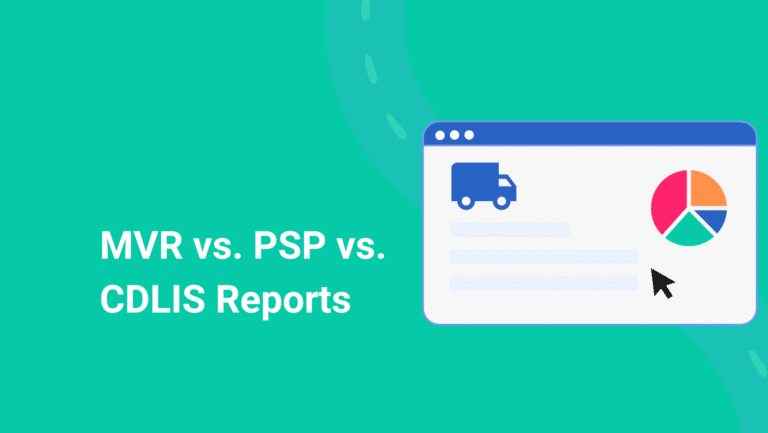What Triggers a DOT Audit? Key Red Flags

Whether triggered by safety violations, complaints, or serious incidents, a DOT audit can lead to hefty fines and operational disruptions. Understanding what triggers these audits is crucial to keeping your fleet compliant and your business running smoothly.
Learn which red flags can lead to a DOT audit and how to protect your fleet from unexpected risks.
1. High CSA Scores
Your Compliance, Safety, and Accountability (CSA) score is a critical factor that can lead to a DOT audit. The FMCSA tracks your safety performance, gathering data from roadside inspections, crash reports, and violation histories. This data is grouped into seven categories called BASICs. A high CSA score signals frequent safety violations, putting you on the DOT’s radar.
According to Truck Safe, In 2021, high CSA scores triggered nearly 7,500 carrier audits, which accounts for nearly 75% of all audits conducted that year.
2. Safety Complaints
Complaints from the public, customers, or employees can also trigger a DOT audit. These complaints may relate to unsafe driving practices or non-compliance with HOS regulations. The DOT takes these complaints seriously, and they can prompt a thorough investigation into your fleet’s operations.
In 2023, a trucking company faced a full-scale audit after a driver reported being forced to drive beyond legal HOS (Hours Of Service) limits. The audit uncovered numerous violations, resulting in a $150,000 fine.
3. Previous Audit Findings
If you’ve been audited before and were found lacking, expect the DOT to check in again. The DOT may schedule follow-up audits to ensure that corrective actions are implemented.
The DOT expects companies to take immediate and effective corrective actions, these might include updating safety protocols, retraining drivers, updating driver qualification files, or implementing new compliance systems. Failing to address the issues identified in a previous audit or recurring violations can increase the likelihood of another audit, often with even greater scrutiny.
Read more: Avoid these top FMCSA violations with MVR Monitoring
4. Crashes or Serious Incidents
Involvement in a crash, especially one with severe injuries or fatalities, almost always prompts a DOT audit.
The DOT may investigate to determine whether the crash was due to non-compliance with safety regulations. This could include drivers with negative records, suspended licenses, or a history of violations that should have disqualified them from operating a commercial vehicle. The DOT will examine whether the company followed proper hiring and monitoring procedures, such as regular MVR checks or MVR Monitoring, training, and vehicle maintenance.
Read more: Nuclear Verdicts: How to Reduce Exposure?
Preparing for a DOT Audit

Failing a DOT audit can be costly. Fines can range from thousands to over $100,000, depending on the violations. Additionally, companies may face increased insurance premiums, legal fees, and the cost of corrective actions.
Understanding what triggers a DOT audit is the first step in protecting your fleet from potential risks. Regularly monitoring your CSA scores, maintaining thorough records, conducting internal audits, following fleet training and promptly addressing any violations or complaints can help you stay compliant and minimize the chances of an audit.
Need help improving driver safety?
Learn how our driver safety solutions can maximize safety and help you mitigate the risk of accidents and audits. Discover MVR Monitoring, MVRs, PSP Reports, CDLIS Reports, Fleet Training, DQF Manager.
*We are not lawyers. Consult with your legal counsel to ensure your processes and procedures meet/ or exceed safety standards and compliance regulations. Please read our legal disclaimer.






